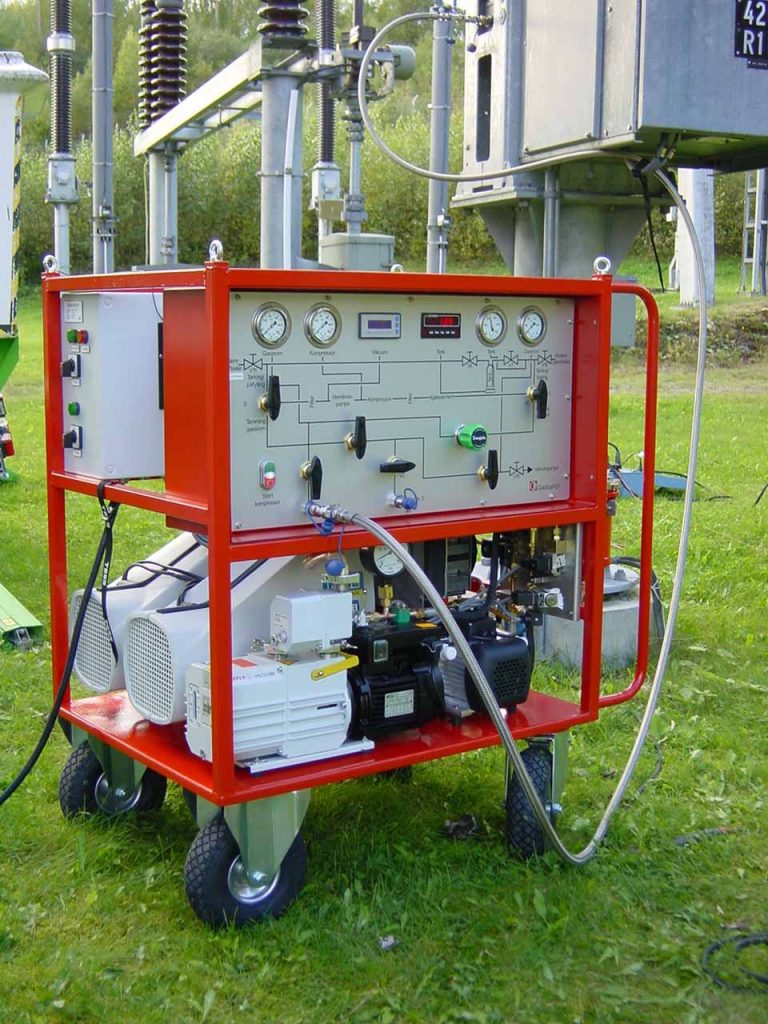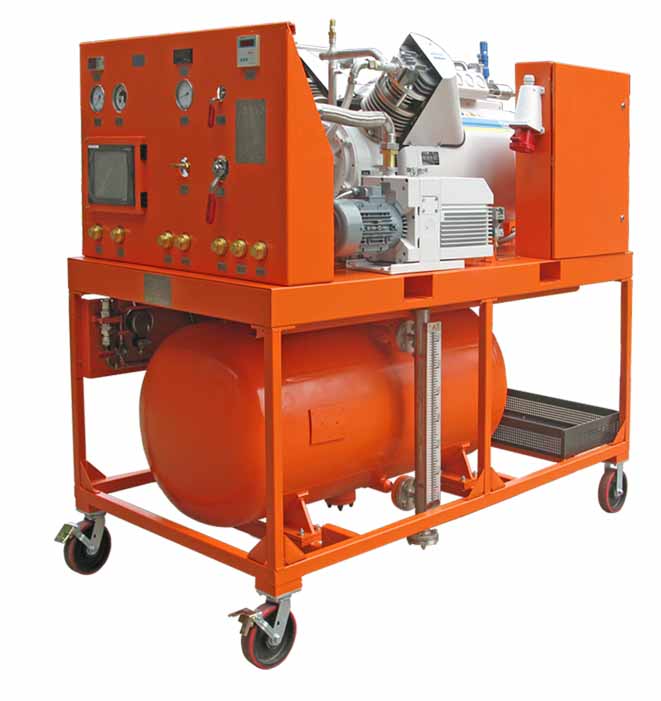Owing to its excellent insulating properties, sulphur hexafluoride or SF6 is primarily used in medium to high-voltage gas-insulated switchgears (GIS). As one of six greenhouse gases, it must not be released into the atmosphere. This is why SF6 recovery during maintenance and production of switchgears is legally required. Specially designed recovery systems have to meet high demands in order to prevent the hazardous gas from leaking. Oil-free compressors with outstanding gas tightness are crucial for this process.
SF6 is a chemical compound of sulphur and fluoride. The colourless and odourless gas is used in aluminium and magnesium castings, in medical technology as well as in sound and heat insulation.
Since the 1970s, SF6 is mainly used for insulating high-voltage switchgears. Following the 1997 climate agreement, SF6 was included in the Kyoto Protocol, which identified the gas’ global warming potential as being around 23,000-times higher than that of carbon dioxide. Once released into the atmosphere, the gas can remain there, unaltered, for up to 3,200 years. For this reason, its industrial use is limited to closed-circuit applications.
Recovery in maintenance and production
Gas-insulated switchgears are filled with SF6, which has to be evacuated for maintenance. To prevent the gas from leaking, portable recovery systems are used, consisting of one or several vacuum pumps, a filter and a compressor.
The SF6 is pumped from the switch gear to achieve a vacuum. The gas is then filtered and fed back to the compressor. There, the SF6 is compressed at a final pressure of 40 bar.g. After cooling, the gas liquefies. In this state it can easily be stored. The recovery systems have a capacity of 1 m³/h to 60 m³/h.
Supreme gas tightness required
Due to the strict legal requirements, handling SF6 demands absolute gas tightness. This is why renowned operators of high-voltage plants use eco-friendly and secure recovery systems with permanently gas-tight HAUG Sauer compressors. Ever since SF6 was established as a high-voltage insulating medium, the dry-running compressors have successfully been used for its recovery and recompression. Over the last 50 years, several thousand of the manufacturer’s compressors have been installed for this purpose. The hermetically gas-tight compressors achieve a leak rate of less than 0.0001 mbar l/s both in mid-operation and during standstill. To ensure permanent gas tightness, every SF6 compressor is tested with helium.
Oil-free compressors for maximum gas purity
The inside of the compressor is completely oil-free, so as to prevent a contamination of the SF6 and the switchgears. In this way, oil-free recovery also performs a crucial safety function. Operating costs are kept to a minimum, since frequent filter exchanges, oil changes and oil supply are not necessary. The compressors’ rugged components are designed for a long service life. Especially in application with long standstills and cold starts, they offer highly reliable operation in all climatic conditions.
Tried and tested technology for individual demands
The compact HAUG Sauer compressors operate at higher suction pressures than similar models, thus enabling a higher volume flow and faster gas recovery. Another distinguishing feature is their low energy consumption. The manufacturer offers customised compressors from 0.5 kW to 110 kW. For higher final pressures, three- or four-stage compressors are used.
SF6 alternatives
Given its environmentally hazardous nature, viable alternatives to SF6 are currently being sought and tested for industrial use. The challenge is finding a gas with comparable insulating properties, similar material compatibility and a significantly lower greenhouse effect. Due to the many areas of application, the substitute gas must be applicable in a multitude of climatic conditions. For the recovery of available SF6 alternatives, HAUG Sauer provides compressors whose materials and overall construction are designed to meet the particular demands of the individual insulating mediums.



